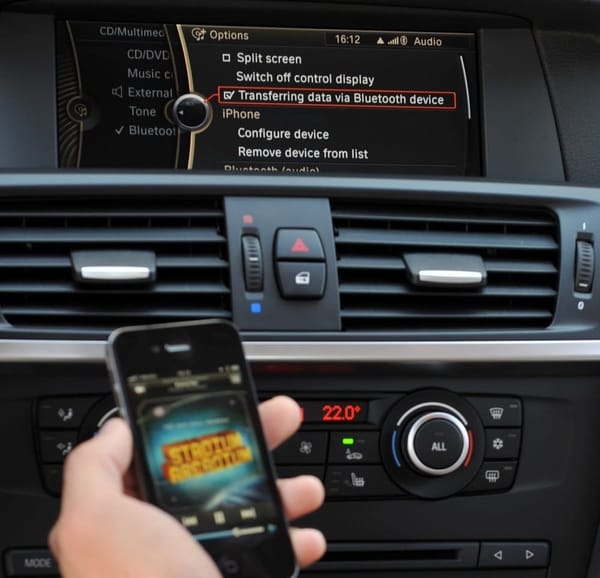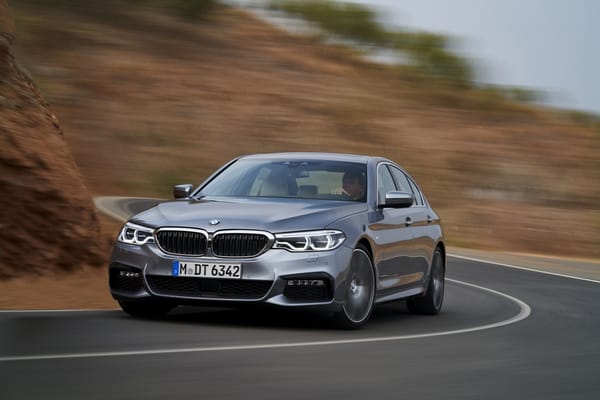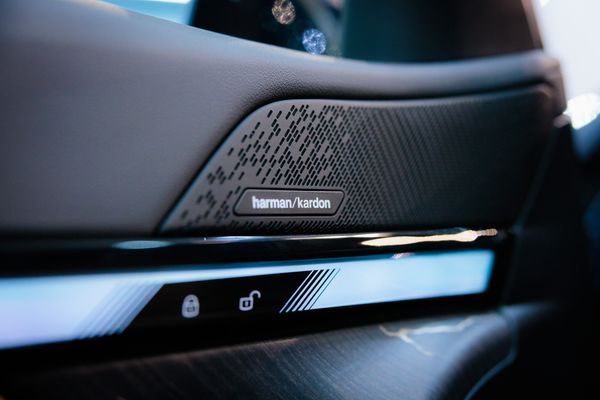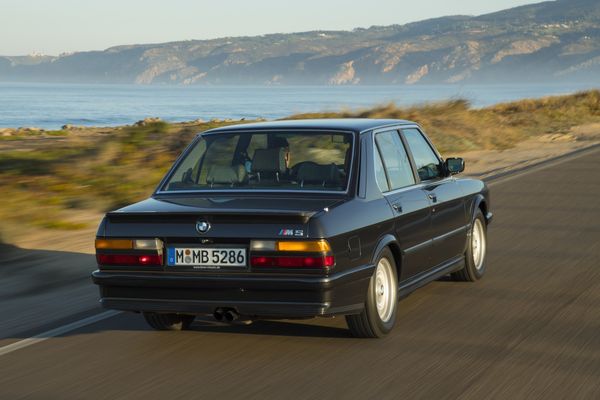Turbocharged Titans: The Revolutionary M102 and M106 Engines
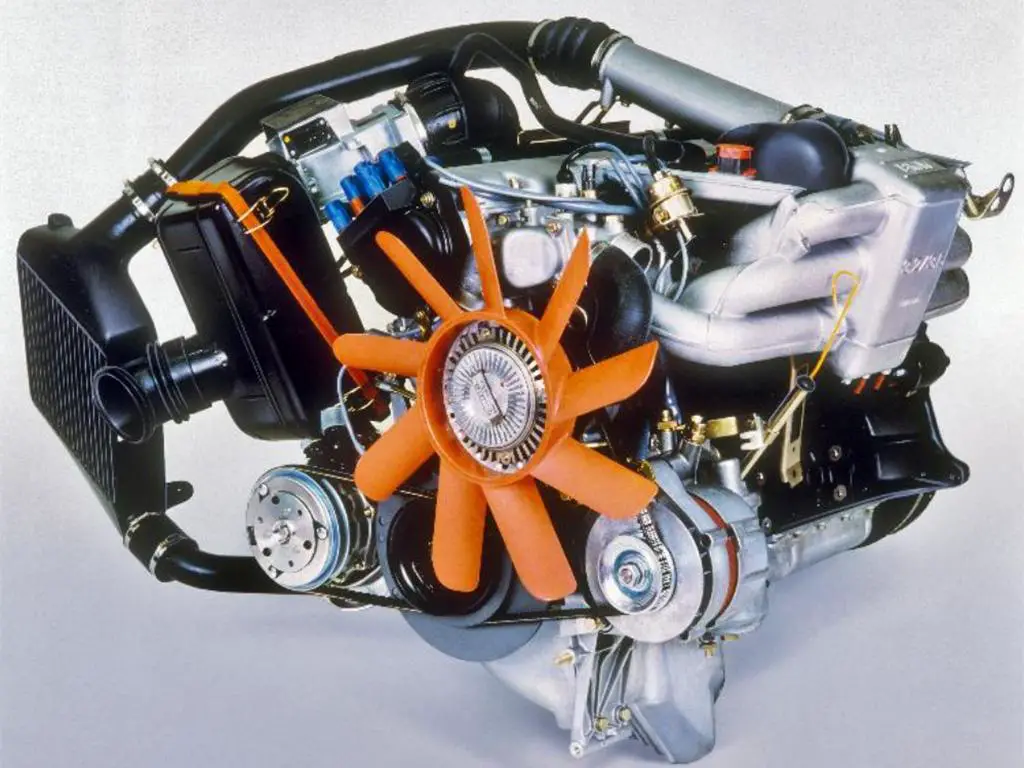
Today we’re delving deep into the heart of Bavaria’s finest, a little-known chapter of BMW’s performance legacy that’s about to send you on an exhilarating ride. Ladies and gentlemen, buckle up and prepare for lift-off as we present to you the M102 and M106 – BMW’s turbocharged marvels that once graced the engine bays of the mighty 745i E23.
Spawned from the legendary straight-six M30 engine family, the M102 and M106 were BMW’s audacious attempt to bring forced induction to the mainstream, long before turbocharging became the norm. As you embark on this journey with us, you’ll discover how these boosted powerhouses were years ahead of their time, and how their groundbreaking technology set the stage for a new era of performance.
The M102 and M106 weren’t just about strapping a turbo to an M30 and calling it a day. Oh no, BMW meticulously crafted these engines to produce colossal amounts of power that could make even the most jaded automotive enthusiast grin from ear to ear. Forged internals, modified cylinder heads, and bespoke intake and exhaust systems were just a few of the upgrades that made these engines worthy of the iconic “M” badge.
But it’s not just the engines themselves that deserve the spotlight. We’ll also explore the rare and enigmatic BMW 745i E23 – the high-performance flagship sedan that showcased the M102/M106’s sheer power and finesse. Its combination of luxury, style, and blistering performance made it the ultimate autobahn missile, a car that today remains a true collector’s item for any self-respecting Bimmerphile.
So, strap in and join us as we turbocharge our way through the incredible story of the M102 and M106 engines, their mind-bending performance, and the BMW 745i E23 that housed these technological masterpieces. Trust us; this is one journey you won’t want to miss!
The M102 and M106 Engine Development
As we unravel the origins of the M102 and M106 engines, it’s imperative we pay homage to their predecessor, the M30 engine family. Revered as one of BMW’s most iconic straight-six engines, the M30 was affectionately nicknamed the “Big Six” for its enduring performance and robust construction. This silky-smooth powerhouse found its way into the hearts of enthusiasts and the engine bays of everything from the classic E9 coupe to the first-gen E24 6-Series. Yet, little did anyone know that the M30 would soon play a starring role in BMW’s turbocharged saga.
In the late ’70s and early ’80s, the automotive world was abuzz with the potential of forced induction. Automakers were grappling with ways to extract more power from their engines, all while adhering to tightening emissions regulations. Amidst this backdrop, BMW’s engineers – their eyes twinkling with ambition – set out to transform the humble M30 into a turbocharged behemoth, worthy of the “Ultimate Driving Machine” moniker. Enter the M102 and M106 engines, a pair of boosted brutes that dared to redefine performance in the BMW lineup.

At the core of the M102 and M106’s ingenuity was their KKK turbocharger – a snail-shaped wonder that crammed air into the engine like a middle-aged man trying to squeeze into his high school jeans. The M102, introduced in 1979, featured a single K27 turbocharger that helped produce a then-unheard-of 252 horsepower.

But, of course, you’re now asking, “What sets the M102 and M106 apart, aside from their power output?” Excellent question, dear reader!
While both engines were based on the M30 architecture, the M106 boasted several notable differences from its M102 sibling. From 1982 to 1986, the 3.4-liter model was used as the base engine instead of the 3.2-liter used for M102. The basic engine remained unchanged – apart from the pistons, which have been adapted to the compression ratio, which has been reduced to 7.0:1, and the outlet valves, which are made from Nimonic. The exhaust manifolds are made of high-temperature-resistant material and sealed with gas-filled metal rings on the cylinder head flange.

Furthermore, the M106 employed a Digital Motor Electronics (DME) system instead of L-Jetronic for precise fuel and ignition control – a pioneering move that paved the way for future engine management systems. The DME controls the knock control and the boost pressure control and interacts with the automatic transmission control (all in one unit). With these upgrades in tow, the M106 truly stood as the zenith of BMW’s turbocharged ambition.
Now, while both the ponies and the torque share the same numbers on paper, the result of these measures was radical.
Engine Components and Upgrades
BMW’s engineers knew that to handle the immense pressures generated by forced induction, the M102 and M106 engines needed some serious fortification. Like a blacksmith tempering a mighty sword, they forged the pistons and connecting rods, ensuring they could withstand the onslaught of turbocharged fury. The result? An engine that could not only produce exhilarating power but also endure the test of time.

When you’re in the business of cramming copious amounts of air into an engine, the head needs to be up to the task. BMW’s boffins didn’t disappoint, sculpting the M102 and M106’s cylinder heads to accommodate the increased airflow. Larger intake and exhaust valves, along with some clever porting work, allowed these engines to breathe like a marathon runner, gulping down every last molecule of oxygen to feed their insatiable hunger for power.
BMW’s attention to detail extended to the M102 and M106’s intake and exhaust systems. The engineers crafted custom exhaust manifolds that allowed the turbocharger to spool up with gusto, while a specialized intake plenum and airbox helped optimize the flow of cold, dense air into the engine. These changes not only improved throttle response but also enhanced the engines’ distinctive, guttural howl – a sound that could make even the most stoic of drivers quiver with excitement.
Ensuring the M102 and M106 had the perfect diet of fuel and spark, BMW equipped both engines with cutting-edge fuel and ignition systems. The M102 used a mechanical fuel injection system, while the M106 took advantage of the new Digital Motor Electronics (DME) technology. The M106’s DME allowed for unparalleled precision in fuel delivery and ignition timing, giving the engine a smooth, linear power delivery that belied its turbocharged roots.
Harnessing the power of a turbocharged engine is no small feat, and BMW’s engineers were well aware of the thermal challenges they faced. To keep the M102 and M106 cool under pressure, they upgraded the cooling systems with larger radiators, oil coolers, and even a unique water pump design for the M106. In addition, the engines received enhanced lubrication systems, ensuring that every moving part was well-oiled and ready to tackle the rigors of high-performance driving. With these upgrades, the M102 and M106 were more than capable of handling the heat – both figuratively and literally.
Performance Capabilities
Now, let’s get down to the nitty-gritty: the numbers that make your heart race and your palms sweat. The M102, with its single K27 turbocharger, cranked out a remarkable 252 horsepower at 5,200 RPMs and 280 lb-ft of torque at 2,600 RPMs with 9 PSI of boost. In 1982, the M106 upped the ante, churning exactly the same numbers but in an entirely different manner. Thanks to its advanced DME system and larger displacement, the full power was available at 4,700 RPMs and the 280 lb-ft of torque from low 2,200 RPMs – with only 6 PSI of boost.
These figures might seem modest by today’s standards, but back in the day, they were enough to make supercar owners break into a cold sweat.

To truly appreciate the M102 and M106’s performance capabilities, we must take a trip down memory lane and see how they stacked up against their contemporaries. In the early ’80s, BMW’s turbocharged engines went head-to-head with the likes of the Porsche 930 Turbo and the Mercedes-Benz 450 SEL 6.9 – both formidable opponents in their own right. Yet, the M102 and M106 proved to be more than a match for these rivals, solidifying their place in the pantheon of high-performance engines.
On paper, the M102 and M106 were impressive, but it was on the tarmac where they truly shined. The BMW 745i E23, with its M102 engine, sprinted from 0-60 mph in a brisk 7.9 seconds, while the M106-powered version shaved that time down to a scorching 7.4 seconds. These figures were astonishing for a luxury sedan in the early ’80s, and they remain respectable even by today’s standards. On the autobahn, the 745i could reach a top speed of 141 mph (M102) and 143 mph (M106), transforming the sedate 7-Series into a bonafide land rocket.
Any discussion of performance would be incomplete without addressing the issue of reliability. Many forced induction engines of the era had a reputation for being temperamental and high-maintenance. However, the M102 and M106 engines defied expectations, proving to be surprisingly robust and reliable, thanks in part to their forged internals and upgraded cooling and lubrication systems. While they may not have been quite as bulletproof as their naturally aspirated M30 cousins, these turbocharged brutes demonstrated that with proper care and attention, they could provide years of thrilling performance.
The BMW 745i E23: The Ultimate Autobahn Missile
As the flagship model in BMW’s lineup, the E23 7-Series exuded luxury, comfort, and sophistication. Yet, beneath the elegant lines and sumptuous interiors of these executive sedans lay an untamed beast, waiting to be unleashed. The 745i E23 – the crown jewel of the range – was where the M102 and M106 engines truly came into their own, transforming the 7-Series from a stately cruiser into an unstoppable force of nature.

The 745i E23 was a masterclass in subtlety, its unassuming appearance belying the immense power that lay beneath the hood. On the outside, the only hints at its performance potential were a discreet “745i” badge and tasteful alloy wheels. Inside, however, the 745i was a veritable sanctuary of luxury, boasting sumptuous leather upholstery, power-adjustable seats, and a smorgasbord of cutting-edge technology for its time. Indeed, the 745i was a rare breed: a car that could cosset its occupants in supreme comfort while hurtling down the autobahn at breakneck speeds.

Of course, the M102 and M106’s prodigious power would have been for naught had the 745i E23 been unable to put it to good use. Fear not, dear reader, for BMW’s engineers ensured that the 745i had the chassis to match its potent engines. Upgraded suspension components, beefier brakes, and a limited-slip differential allowed the 745i to navigate twisty mountain roads with aplomb, while its autobahn manners were nothing short of impeccable. In the hands of a skilled driver, the 745i E23 was a high-performance dance partner that could pirouette with grace and precision.
The 745i E23 was always destined to be a rare and exclusive machine, and production numbers reflect that. Just over 6,000 M102-powered 745i models were built between 1980 and 1982, while the M106 version saw a production run of around 2,800 units from 1982 to 1986. These figures make the 745i E23 one of the rarest and most sought-after BMWs of its era, a true collector’s item for connoisseurs of high-performance luxury sedans.
The Legacy of the M102/M106 Engines
The M102 and M106 engines were trailblazers, demonstrating the immense potential of turbocharging in the hands of a skilled automaker. Although BMW would take a hiatus from forced induction after the 745i E23, the lessons learned from the M102 and M106 would prove invaluable in the development of future turbocharged engines. Fast-forward a few decades, and turbocharging has become a staple of BMW’s performance lineup, with everything from the M140i to the latest M5 wielding the power of forced induction.
In the early 1980s, the M102 and M106 were among a select few engines that dared to explore the brave new world of turbocharging. Their groundbreaking technology and exhilarating performance played a crucial role in shaping the industry’s perception of forced induction. Today, we live in a world where turbochargers are as ubiquitous as cupholders, and we have pioneers like the M102 and M106 to thank for showing us the way.
As rare and coveted machines, the BMW 745i E23 and its M102/M106 engines have enjoyed a surge in popularity among collectors and enthusiasts alike. Pristine examples have become the Holy Grail for many a Bimmerphile, commanding eye-watering prices at auctions and private sales. The allure of these turbocharged titans lies not just in their rarity, but in the indelible mark they left on the automotive landscape – a testament to BMW’s relentless pursuit of the “Ultimate Driving Machine.”
In Conclusion
As we stand in awe of the M102 and M106 engines, it’s impossible not to appreciate the profound impact they had on BMW’s performance history. These trailblazing powerplants shattered conventions and forged new paths, proving that even luxury sedans could be endowed with the heart of a sports car. Though their time in the limelight was relatively short-lived, the M102 and M106’s influence on BMW’s future endeavors cannot be understated.
The BMW 745i E23 remains a prized possession for collectors and enthusiasts alike, a symbol of an era when BMW dared to push the boundaries of what a luxury sedan could be. With its unassuming looks, opulent interior, and spine-tingling performance, the 745i E23 captures the essence of the “Ultimate Driving Machine” in a way few other cars can. To own one is to possess a piece of automotive history, a testament to BMW’s unwavering commitment to engineering excellence.
In today’s world of electrification and downsized engines, the M102 and M106 engines serve as a poignant reminder of the early days of turbocharging – a time when automakers like BMW were just beginning to unlock the potential of forced induction.
As we hurtle toward an uncertain future, the M102 and M106 engines stand as a testament to the spirit of innovation and the relentless pursuit of performance that has defined BMW throughout its history. Long may they continue to inspire future generations of gearheads and Bimmerists alike.


